4runner manual transmission
The Toyota 4Runner manual transmission, offered in earlier models, provided precise control and off-road capability, appealing to enthusiasts. While discontinued in later models, its legacy remains popular, with potential future reconsideration by Toyota.
1.1 Historical Overview of Manual Transmission in Toyota 4Runner
The Toyota 4Runner manual transmission was available in earlier models, particularly in pre-2010 iterations. It was a popular choice for off-road enthusiasts, offering a 5-speed manual option in the 1990s and early 2000s. The manual transmission was discontinued in later models, with the last availability in 2001 for the 3.4L engine. This shift reflected broader industry trends toward automatic transmissions. Despite its discontinuation, the manual 4Runner remains sought after by enthusiasts for its driving experience and off-road capabilities; Historical data shows that manual transmissions were integral to the 4Runner’s identity, particularly in its earlier generations, before being phased out due to declining demand and evolving market preferences.
1.2 Popularity and Demand for Manual Transmission in 4Runner Models
Manual transmissions in Toyota 4Runner models were highly popular among off-road enthusiasts and driving purists. The 5-speed manual option, particularly in older generations, was praised for its precision and control, making it a favorite for rugged terrains. However, over time, demand shifted toward automatic transmissions due to increasing urbanization and the desire for convenience. By the early 2000s, manual transmissions were phased out, reflecting broader market trends. Despite this, a niche community of enthusiasts continues to value manual 4Runners for their unique driving experience and mechanical simplicity. This dedicated following has kept resale values for manual models relatively strong, even as automatics dominate the market.

Key Features of the Toyota 4Runner Manual Transmission
The Toyota 4Runner manual transmission features a durable 5-speed design, offering smooth shifting and enhanced off-road control. Its simplicity and reliability make it a favorite among enthusiasts.
2.1 Specifications of the 5-Speed Manual Transmission
The Toyota 4Runner’s 5-speed manual transmission features a robust design with a gear ratio optimized for both on-road and off-road performance. It includes a dual-range transfer case, enabling drivers to switch between high and low ranges for varying terrain. The transmission is paired with a hydraulic clutch system, providing smooth and precise gear shifts. Its compact and lightweight construction enhances fuel efficiency without compromising durability. This setup ensures reliable performance, making it a preferred choice for adventurous drivers seeking control and versatility in their vehicle.
2.2 Design and Functionality of the Manual Transmission System
The Toyota 4Runner’s manual transmission system is engineered for durability and performance, featuring a 5-speed gearbox with synchronized gears for smooth shifting. Its compact design ensures minimal weight while maintaining strength, crucial for off-road adventures. The transmission incorporates a dual-range transfer case, allowing seamless switching between two-wheel and four-wheel drive modes. Hydraulic clutch operation provides a responsive pedal feel, enhancing driver control. The system is designed to optimize torque delivery, particularly in low-speed, high-torque scenarios, making it ideal for challenging terrains. This combination of robust engineering and precise functionality ensures the manual transmission remains a reliable choice for enthusiasts seeking both power and control.
2.3 Benefits of the Manual Transmission for Off-Road Performance
The manual transmission in the Toyota 4Runner offers distinct advantages for off-road enthusiasts. It provides precise control over gear shifts, enabling better modulation of power delivery on uneven terrain. This level of control is critical when navigating obstacles like steep inclines or rocky trails. Additionally, the manual transmission typically weighs less than its automatic counterpart, improving the vehicle’s power-to-weight ratio and enhancing agility. The ability to maintain low-speed crawling without relying on torque converters ensures consistent traction, reducing wheel spin and improving stability. For drivers who demand maximum connectivity to their vehicle’s performance, the manual transmission delivers an unparalleled off-road driving experience, making it a preferred choice for adventurous expeditions.

Performance and Capabilities
The Toyota 4Runner with a manual transmission delivers enhanced acceleration and towing capacity, offering drivers precise control and improved off-road performance in challenging terrain conditions.
3.1 Acceleration and Power Delivery with Manual Transmission
The Toyota 4Runner equipped with a manual transmission offers brisk acceleration, particularly in lower gears, enhancing off-road responsiveness. The 5-speed manual ensures quick power delivery, making it ideal for rugged terrains where precise control is essential. Drivers can optimize engine RPMs for better torque distribution, which is crucial during climbs or when navigating rough trails. This feature allows for a more engaging driving experience compared to automatic counterparts, providing enthusiasts with the ability to connect more directly with the vehicle’s performance capabilities. The manual transmission’s direct engagement enhances the overall driving dynamics, making it a preferred choice for those seeking an adventurous and sporty ride.
3.2 Fuel Efficiency of Manual vs. Automatic Transmission
The Toyota 4Runner with a manual transmission historically offered comparable fuel efficiency to its automatic counterpart, though specific numbers varied by model year. For instance, the 1995 4Runner with a 5-speed manual achieved around 13/16 MPG, while automatic models saw similar or slightly better figures. Modern automatic transmissions, however, have closed the gap, often matching or even surpassing manual transmission efficiency due to advancements in technology. The choice between manual and automatic often comes down to personal preference, as the fuel efficiency difference is minimal. Nonetheless, the manual transmission remains a favored option for drivers seeking better control and a more engaging driving experience, even if it means slightly lower MPG in certain scenarios.
3.3 Towing Capacity with Manual Transmission
The Toyota 4Runner equipped with a manual transmission demonstrated robust towing capabilities, particularly in earlier models. For example, the 1995 model with a 5-speed manual could tow up to 5,000 pounds, making it a reliable choice for off-road enthusiasts and those needing to haul trailers or boats. The manual transmission’s ability to maintain better control at lower speeds further enhanced its towing performance in challenging terrains. However, as manual transmissions were phased out in later models, the towing capacity for automatic-equipped 4Runners remained comparable, ensuring that the vehicle’s utility wasn’t compromised. Despite this, many enthusiasts still appreciate the manual transmission’s direct driving experience and precision when managing heavy loads.
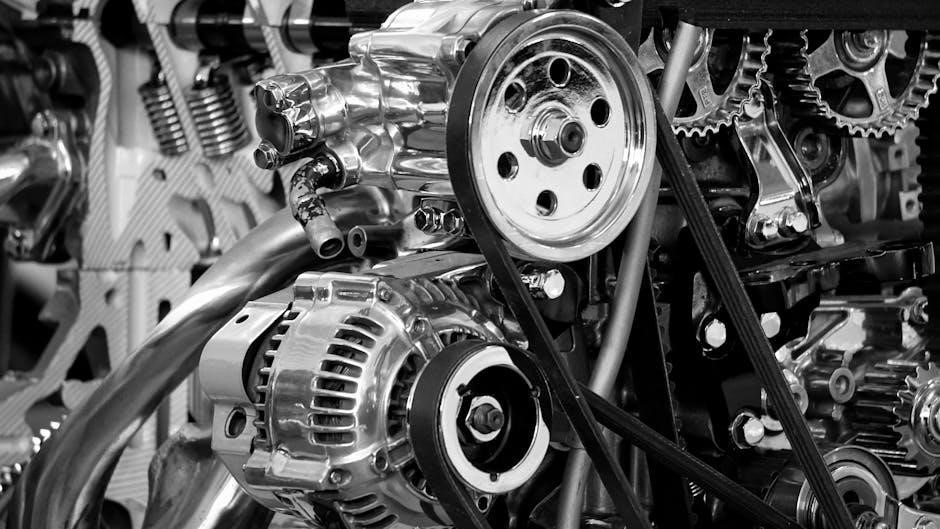
Availability of Manual Transmission in Different Models
Manual transmissions were widely available in older 4Runner models, particularly pre-2010, offering a 5-speed option. Later models phased out manual transmissions, with some special editions retaining them.
4.1 Manual Transmission in Older 4Runner Models (Pre-2010)
In older 4Runner models, pre-2010, the manual transmission was a popular choice among enthusiasts. These models featured a robust 5-speed manual gearbox, offering precise control and enhanced off-road capability. The 5-speed manual transmission was standard in many base models and optional in higher trims, providing drivers with a more engaging driving experience. This setup was particularly favored by off-road enthusiasts, as it allowed for better low-speed maneuverability and torque control. The availability of the manual transmission in these models contributed to the 4Runner’s reputation as a rugged and reliable SUV. However, starting from the 2010 model year, Toyota began phasing out the manual option in favor of automatic transmissions.
4.2 Discontinuation of Manual Transmission in Later Models
The manual transmission option in the Toyota 4Runner was gradually phased out starting in 2001, particularly for the 3.4L engine models. By 2010, the manual transmission was no longer available in any 4Runner trim. This shift aligns with broader industry trends favoring automatic transmissions for convenience and smoother city driving. Toyota cited low demand and the increasing popularity of automatic transmissions as primary reasons for discontinuation. While enthusiasts expressed disappointment, the move reflected changing consumer preferences. The discontinuation marked the end of an era for the 4Runner, as subsequent models exclusively featured automatic transmissions, prioritizing ease of use over the driving engagement manual transmissions provided.
4.3 Special Editions and Trims with Manual Transmission
Throughout its history, certain special editions and trims of the Toyota 4Runner featured manual transmissions, catering to off-road enthusiasts. The 1995 model, for instance, offered a 5-speed manual paired with a 3.0L V6 engine, delivering 150HP and moderate fuel efficiency. Additionally, some limited-production models, such as those with rear differential locks, also included manual transmissions. These configurations were particularly favored for their enhanced control during off-road adventures. However, such variants became scarce as automatic transmissions gained prominence. While rare, these special editions remain sought after by collectors and purists who value the driving experience of a manual gearbox in the rugged 4Runner.

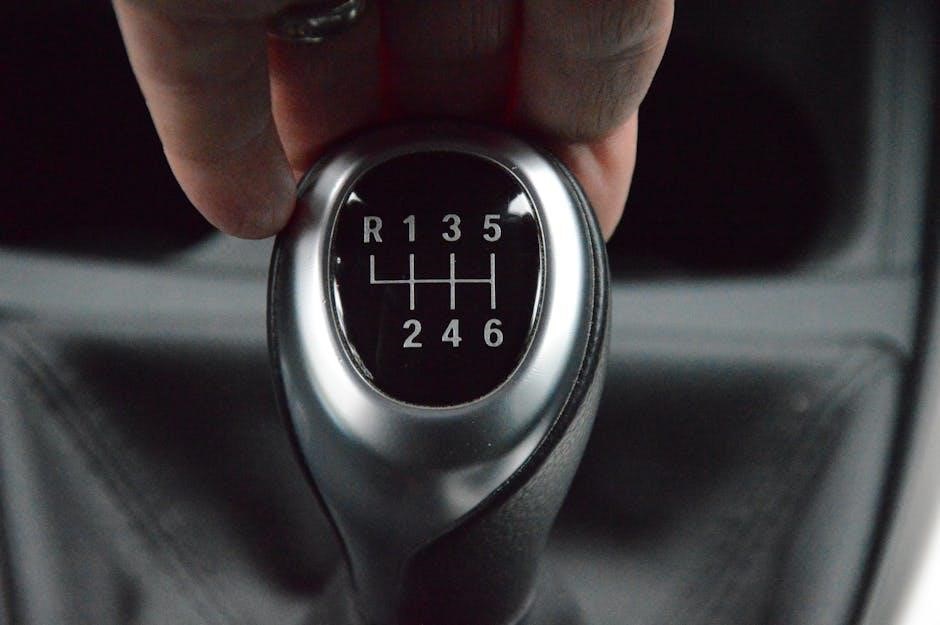
Comparison with Other Toyota Models
The Toyota 4Runner’s manual transmission options are often compared to those in the Tacoma, with the latter consistently offering manual choices, making it more appealing to off-road enthusiasts.
5.1 Manual Transmission in Toyota Tacoma vs. 4Runner
The Toyota Tacoma consistently offers manual transmission options, appealing to off-road enthusiasts, while the 4Runner discontinued this feature post-2001. The Tacoma’s availability makes it a preferred choice for drivers seeking manual control, unlike the 4Runner, which now focuses on automatic transmissions. This shift reflects market trends, as SUVs like the 4Runner prioritize convenience, whereas trucks like the Tacoma maintain manual options for utility and driver engagement. Enthusiasts hoping for a manual 4Runner often look to the Tacoma as the closest alternative, highlighting Toyota’s strategic differentiation between its truck and SUV lineups.
5.2 Other Toyota Vehicles Offering Manual Transmission
Toyota continues to offer manual transmissions in select models, catering to driving enthusiasts. The Tacoma, a mid-size pickup, features a manual option, ideal for off-road enthusiasts. Additionally, the GR86, GR Supra, and GR Corolla sport manual transmissions, emphasizing driver engagement and performance. These models highlight Toyota’s commitment to manual driving experiences, even as the 4Runner shifts toward automatic-only configurations. While the 4Runner no longer includes manual options, Toyota’s lineup ensures enthusiasts have alternatives. The Tacoma remains a top choice for off-road capabilities with manual control, while the GR models focus on sporty, dynamic driving. This diverse approach allows Toyota to satisfy both utility and performance-driven markets, maintaining its appeal across different consumer preferences and driving needs.
5.3 Why Manual Transmission is More Common in Tacoma
The Toyota Tacoma, unlike the 4Runner, maintains a strong presence of manual transmission options due to its targeted audience. As a mid-size pickup, the Tacoma caters primarily to off-road enthusiasts and professionals who value the control and durability that manual transmissions provide. The Tacoma’s design emphasizes ruggedness and versatility, making manual transmissions a natural fit for its intended use cases. Additionally, the Tacoma’s market positioning as a work-oriented vehicle aligns with the preferences of drivers who require precise control over their truck’s performance. This focus on functionality and driver engagement ensures that manual transmissions remain a staple in the Tacoma lineup, even as the 4Runner transitions to automatic-only configurations. The Tacoma’s manual transmission option reflects Toyota’s strategic alignment with its target demographic, ensuring continued satisfaction among its loyal customer base.

Modifications and Aftermarket Solutions
Enthusiasts often modify their Toyota 4Runners with aftermarket manual transmission kits to enhance off-road performance and driver engagement. These modifications are popular among those seeking precise control.
Aftermarket solutions include lightweight transmission components and performance-enhanced clutch systems. However, such modifications require professional installation to ensure reliability and durability, especially for heavy off-road use.
6.1 Installing a Manual Transmission in a 4Runner
Installing a manual transmission in a Toyota 4Runner requires significant mechanical expertise and specialized tools. While later models no longer offer this option, enthusiasts can opt for aftermarket kits designed for pre-2010 models. These kits often include components like the gearbox, clutch, and linkage, ensuring compatibility with the vehicle’s existing drivetrain.
However, the process is complex and not recommended for inexperienced DIYers. Professional installation is advised to avoid costly errors. Additionally, modifying the vehicle may void warranties or affect resale value. Despite these challenges, many enthusiasts pursue manual transmission conversions to enhance off-road performance and driving engagement.
6.2 Popular Aftermarket Manual Transmission Kits
Several aftermarket companies offer manual transmission kits for the Toyota 4Runner, catering to enthusiasts seeking enhanced off-road performance. Kits from brands like Marlin Crawler and JTE provide everything needed for a manual swap, including gearboxes, adapters, and shifters. These solutions are particularly popular for older 4Runner models, enabling drivers to retain precise control in rugged terrain.
Such kits are often tailored for specific generations, such as the 3rd and 4th-gen 4Runners, ensuring compatibility and ease of installation. They are favored for their durability and ability to handle high-torque applications, making them ideal for serious off-road adventurers. Buyers should research reputable brands to ensure quality and reliability.
6.3 Performance Enhancements for Manual Transmission
Enthusiasts seeking to optimize their Toyota 4Runner’s manual transmission can explore various performance enhancements. Lightweight flywheels and high-performance clutch kits improve acceleration and responsiveness, especially during off-road adventures. Short-throw shifters reduce the distance between gear shifts, enhancing precision and driver engagement. Additionally, aftermarket gear ratio swaps can be installed to better suit specific driving conditions, such as low-range for rock crawling or higher ratios for highway efficiency. These modifications not only elevate the vehicle’s capabilities but also provide a more connected driving experience, catering to those who prioritize performance and control.
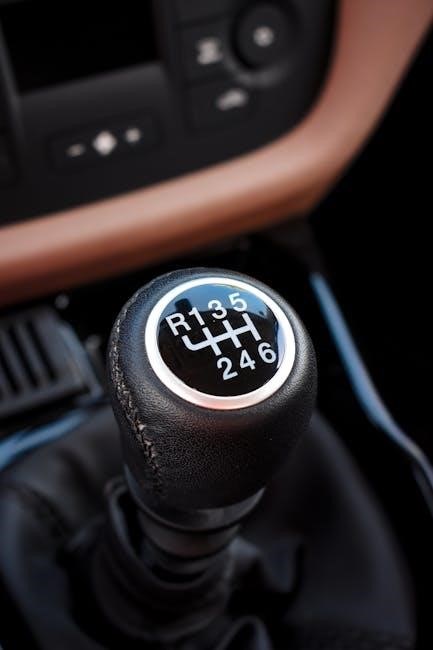
Maintenance and Repair
Regular maintenance of the Toyota 4Runner manual transmission involves checking fluid levels and inspecting for leaks. Common issues include worn clutches and gear wear, requiring timely repairs to avoid costly replacements.
7.1 Common Issues with Manual Transmission in 4Runner
Common issues with the Toyota 4Runner manual transmission include worn clutch facings, gear wear, and fluid leaks. These problems often arise from excessive wear and tear, particularly in off-road conditions. Drivers may experience difficulty shifting gears or a grinding sensation during gear changes. Additionally, the transmission’s synchronizers can wear out over time, leading to slower or incomplete gear engagement. Regular maintenance, such as fluid changes and inspections, can help prevent these issues. However, if left unaddressed, they may require costly repairs or even a full transmission replacement. Proper care is essential to extend the life of the manual transmission system.
7.2 DIY Maintenance Tips for Manual Transmission
Regular DIY maintenance can extend the life of the Toyota 4Runner manual transmission. Start by checking the transmission fluid level regularly, as low fluid can cause gears to wear prematurely. Replace the clutch when worn, as a failing clutch can damage the transmission. Inspect for fluid leaks around seals and gaskets, addressing them promptly to prevent contamination. Clean the transmission case periodically to remove dirt and debris that may interfere with components. Additionally, monitor gear engagement smoothness; rough shifting may indicate synchronizer wear. Finally, consult a repair manual for specific torque specifications when performing repairs or replacements to ensure proper functionality.
7.3 Cost of Replacing a Manual Transmission
Replacing a manual transmission in a Toyota 4Runner can range from $2,000 to $4,000, depending on labor costs and the quality of replacement parts. A rebuilt transmission typically costs between $1,500 and $2,500, while a brand-new unit can exceed $3,000. Labor fees vary by shop but often add $1,000 to $1,500 to the total bill. Additional costs may include transmission fluid, a new clutch, and filter replacements. DIY installation can save on labor but requires mechanical expertise. For older models, aftermarket or refurbished transmissions may be more cost-effective. Always consult a trusted mechanic or repair manual for accurate estimates tailored to your specific 4Runner model.
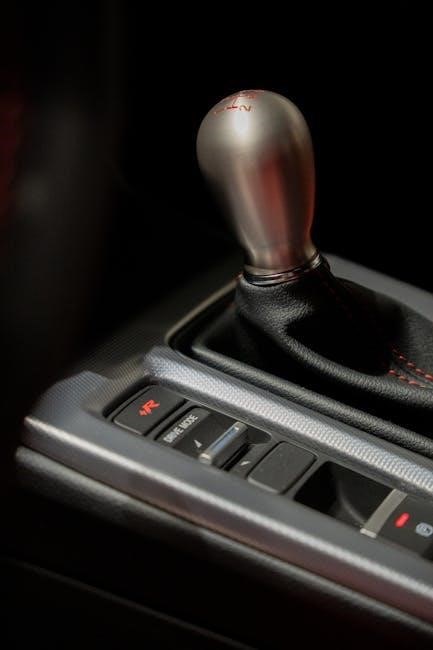
Market and Consumer Interest
Despite declining demand for manual transmissions in SUVs, enthusiasts value the Toyota 4Runner’s manual option for its driving experience and resale value in niche markets.
8.1 Declining Demand for Manual Transmissions in SUVs
The demand for manual transmissions in SUVs, including the Toyota 4Runner, has significantly decreased in recent years. Modern drivers increasingly favor the convenience and ease of automatic transmissions, especially in urban settings. The shift towards more comfortable and less engaging driving experiences has led automakers to prioritize automatic and continuously variable transmissions. Additionally, the growing popularity of hybrid and electric vehicles further diminishes the appeal of manual transmissions. Toyota has responded by discontinuing manual options in many models, including the 4Runner, to align with consumer preferences and market trends. This shift reflects broader industry movements, as manual transmissions become niche offerings primarily for enthusiast-driven vehicles.
8.2 Enthusiast Community and Manual Transmission Preference
The enthusiast community remains a strong advocate for manual transmissions in vehicles like the Toyota 4Runner, valuing the control and connection it provides. Many off-road enthusiasts and tuners prefer manuals for their precision and durability in rugged conditions. Despite declining general demand, this niche group actively seeks out manual-equipped models, often modifying them to enhance performance. Toyota’s discontinuation of the manual 4Runner has sparked discussions within these communities, emphasizing the importance of preserving driving engagement. Their passion highlights the unique appeal of manual transmissions, even as the broader market shifts away from them. This dedicated following ensures that manual transmissions remain relevant, though primarily within specialized circles.
8.3 Resale Value of Manual Transmission 4Runners
Manual transmission Toyota 4Runners tend to hold their resale value well, particularly among enthusiasts and collectors. Older models, such as pre-2010 4Runners with manual transmissions, are sought after for their unique driving experience and durability. The rarity of manual options in later models further enhances their appeal, making them desirable in the used car market. While automatic transmissions dominate sales, the niche demand for manuals ensures these vehicles retain a premium value. This trend is especially noticeable in off-road communities, where the manual transmission’s capabilities are highly valued. As a result, manual 4Runners often command higher prices compared to their automatic counterparts, reflecting their enduring popularity and practical advantages. This makes them a smart investment for those who appreciate the benefits of a manual gearbox.
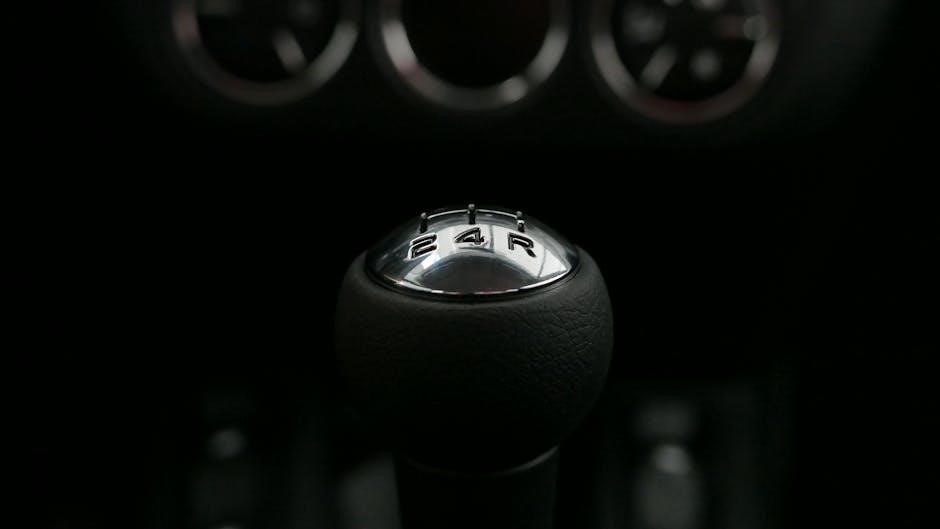
Future Prospects
The next-gen Toyota 4Runner may reintroduce a manual transmission option, catering to enthusiast demand. Toyota is considering hybrid manual transmission technology, blending efficiency with driver engagement.
9.1 Possibility of Manual Transmission in Next-Gen 4Runner
Rumors suggest the next-generation Toyota 4Runner might feature a manual transmission option, aligning with enthusiast demands. Toyota has expressed interest in exploring manual options for future models, especially considering the success of manual transmissions in the Tacoma. A hybrid manual transmission system is also under development, potentially offering a blend of efficiency and driver engagement. While no official confirmation exists, the possibility remains, driven by customer feedback and the growing interest in manual transmissions for off-road performance. This could mark a return to a feature last offered in the early 2000s, appealing to a niche yet passionate market segment.
9.2 Toyota’s Stance on Manual Transmissions in Future Models
Toyota has expressed openness to incorporating manual transmissions in future models, particularly in response to enthusiast demand. The company has explored hybrid manual transmission technology, suggesting potential integration into vehicles like the 4Runner. While no definitive commitment exists, Toyota acknowledges the niche appeal of manual transmissions, especially for off-road enthusiasts. The brand continues to monitor market trends and customer preferences, indicating flexibility in its transmission offerings. This approach balances modernization with the desires of a dedicated community, hinting that manual options could resurface if demand grows.
9.3 Hybrid Manual Transmission Technology in Toyota
Toyota is exploring hybrid manual transmission technology, blending efficiency with driver engagement. This innovation could potentially combine a manual gearbox with hybrid drivetrains, offering improved fuel economy and emissions reduction. Such a system might enhance off-road performance in vehicles like the 4Runner, maintaining low-speed control while integrating electric assist. Toyota’s patent filings suggest research into seamless shifting and optimized power delivery. While specifics are scarce, this technology represents a forward-thinking approach, aiming to satisfy both environmental demands and enthusiast preferences. If implemented, it could redefine the manual transmission’s role in modern SUVs, ensuring its relevance in an increasingly hybridized automotive landscape.